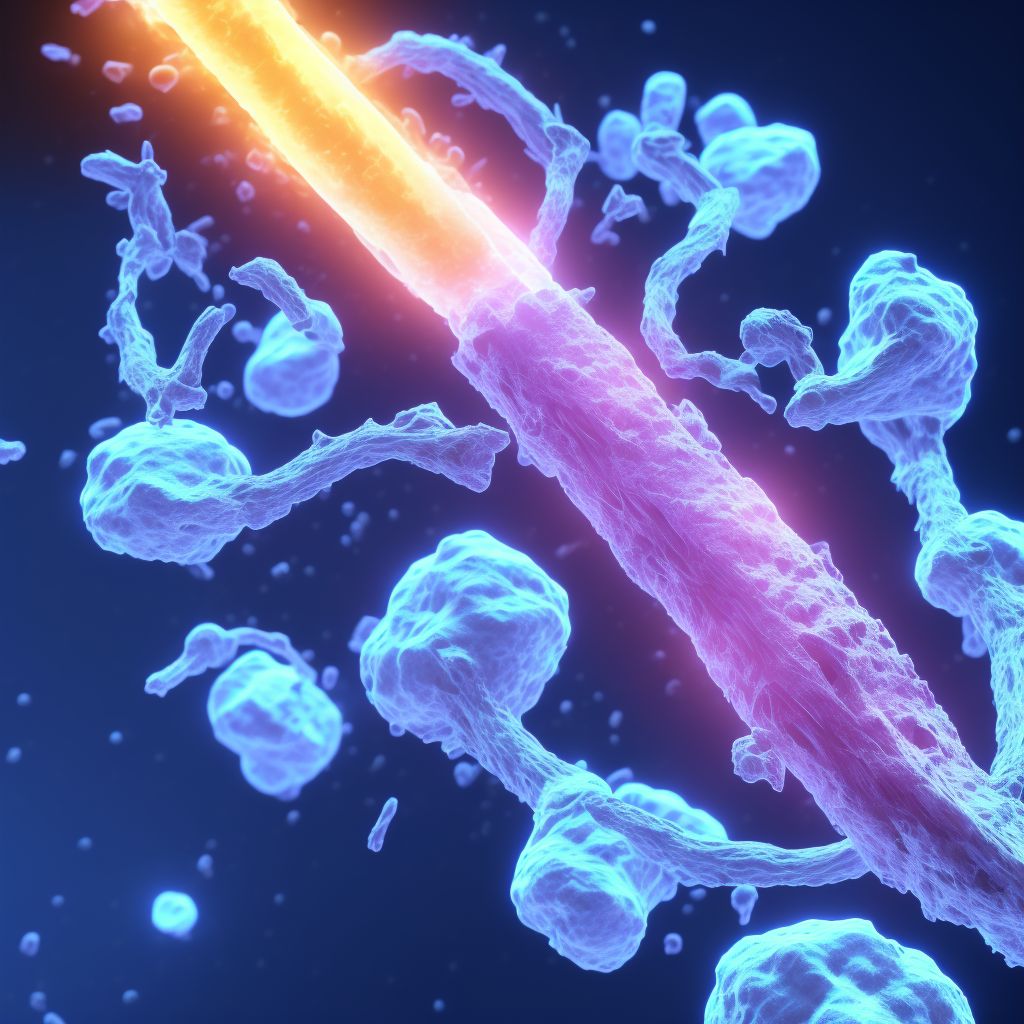
Displaced transverse fracture of shaft of unspecified fibula, subsequent encounter for open fracture type I or II with malunion Save
ICD-10 code: S82.423Q
Disease category: S82.423: Displaced transverse fracture of shaft of unspecified fibula
Understanding Displaced Transverse Fracture of the Shaft of Unspecified Fibula
A displaced transverse fracture of the shaft of an unspecified fibula is a specific type of fracture that occurs in the lower leg. This injury is characterized by a complete break across the fibula bone, resulting in a misalignment of the fractured ends. The displacement of the bone fragments can vary, and the severity of the fracture can be categorized as type I or II, with type II being more severe.
When a displaced transverse fracture of the fibula occurs, it requires medical intervention to ensure proper healing and alignment of the bone. In some cases, an open fracture may be present, where the broken bone pierces through the skin. This subsequent encounter refers to a follow-up appointment or treatment session after the initial diagnosis and treatment.
- Causes: Displaced transverse fractures of the fibula can be caused by various factors such as trauma, falls, sports injuries, or accidents. These fractures often occur due to a direct blow or excessive force applied to the lower leg.
- Symptoms: Common symptoms of this type of fracture include localized pain, swelling, bruising, difficulty bearing weight, and visible deformity if the bone is displaced.
- Diagnosis: To diagnose a displaced transverse fracture of the fibula, a healthcare professional will conduct a physical examination, assess the patient's medical history, and may order imaging tests like X-rays or CT scans to determine the severity of the fracture.
- Treatment: (Please note that we won't cover treatment in this article.)
It is essential to seek medical attention promptly if you suspect a displaced transverse fracture of the fibula. Early diagnosis and appropriate treatment can help prevent complications and promote proper healing. A healthcare professional will determine the best course of action based on the severity of the fracture and the patient's overall health.
Remember, this article focuses on providing information about displaced transverse fractures of the fibula and subsequent encounters for open fracture type I or II with malunion. For specific treatment advice, please consult a qualified healthcare professional.
Treatment of Displaced transverse fracture of shaft of unspecified fibula, subsequent encounter for open fracture type I or II with malunion:
Treatment Options for Displaced Transverse Fracture of Shaft of Unspecified Fibula
When it comes to the treatment of a displaced transverse fracture of the shaft of an unspecified fibula, subsequent encounter for open fracture type I or II with malunion, there are several options available. The choice of treatment depends on various factors, including the severity of the fracture, ...
To see full information about treatment please Sign up or Log in